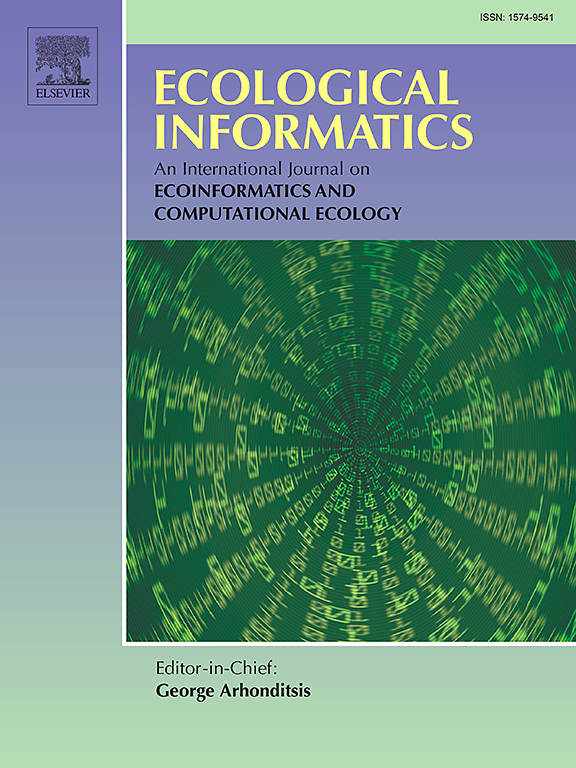DeepFins: Capturing dynamics in underwater videos for fish detection
IF 5.8
2区 环境科学与生态学
Q1 ECOLOGY
引用次数: 0
Abstract
The monitoring of fish in their natural habitat plays a crucial role in anticipating changes within marine ecosystems. Marine scientists have a preference for automated, unrestricted underwater video-based sampling due to its non-invasive nature and its ability to yield desired outcomes more rapidly compared to manual sampling. Generally, research on automated video-based detection using computer vision and machine learning has been confined to controlled environments. Additionally, these solutions encounter difficulties when applied in real-world settings characterized by substantial environmental variability, including issues like poor visibility in unregulated underwater videos, challenges in capturing fish-related visual characteristics, and background interference. In response, we propose a hybrid solution that merges YOLOv11, a popular deep learning based static object detector, with a custom designed lightweight motion-based segmentation model. This approach allows us to simultaneously capture fish dynamics and suppress background interference. The proposed model i.e., DeepFins attains 90.0% F1 Score for fish detection on the OzFish dataset (collected by the Australian Institute of Marine Science). To the best of our knowledge, these results are the most accurate yet, showing about 11% increase over the closest competitor in fish detection tasks on this demanding benchmark OzFish dataset. Moreover, DeepFins achieves an F1 Score of 83.7% on the Fish4Knowledge LifeCLEF 2015 dataset, marking an approximate 4% improvement over the baseline YOLOv11. This positions the proposed model as a highly practical solution for tasks like automated fish sampling and estimating their relative abundance.
求助全文
约1分钟内获得全文
求助全文
来源期刊

Ecological Informatics
环境科学-生态学
CiteScore
8.30
自引率
11.80%
发文量
346
审稿时长
46 days
期刊介绍:
The journal Ecological Informatics is devoted to the publication of high quality, peer-reviewed articles on all aspects of computational ecology, data science and biogeography. The scope of the journal takes into account the data-intensive nature of ecology, the growing capacity of information technology to access, harness and leverage complex data as well as the critical need for informing sustainable management in view of global environmental and climate change.
The nature of the journal is interdisciplinary at the crossover between ecology and informatics. It focuses on novel concepts and techniques for image- and genome-based monitoring and interpretation, sensor- and multimedia-based data acquisition, internet-based data archiving and sharing, data assimilation, modelling and prediction of ecological data.
 求助内容:
求助内容: 应助结果提醒方式:
应助结果提醒方式:


